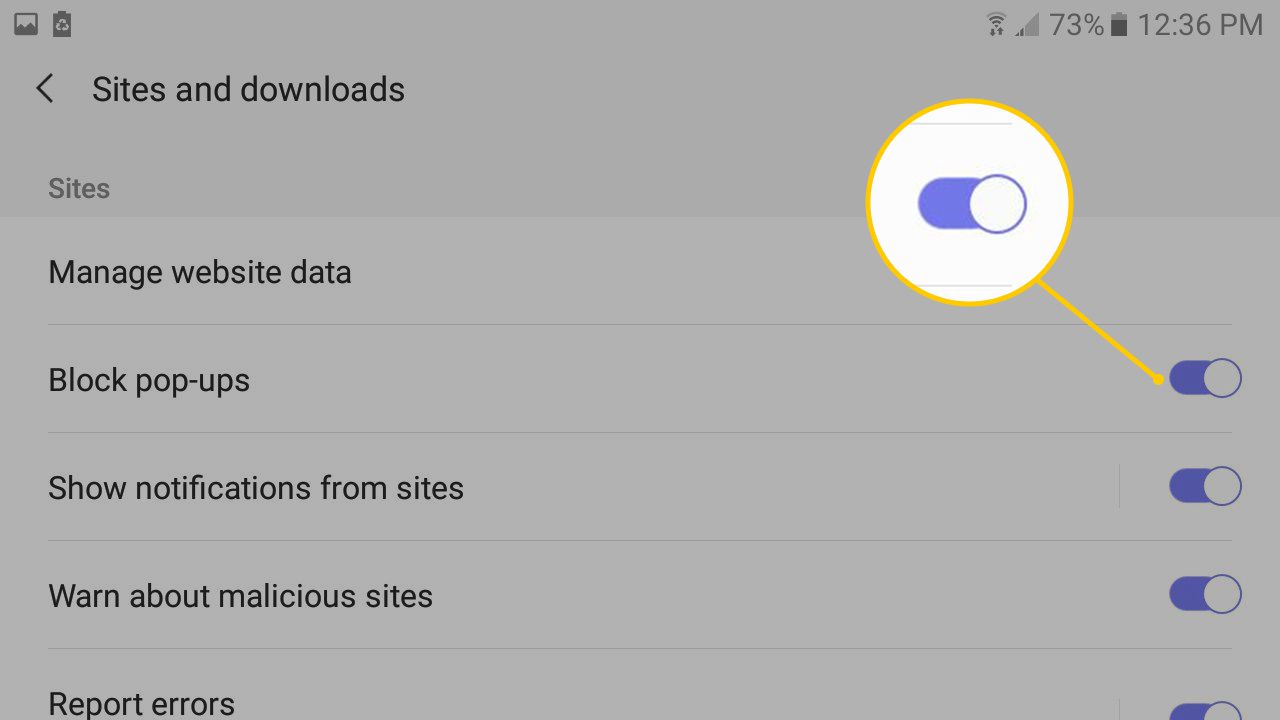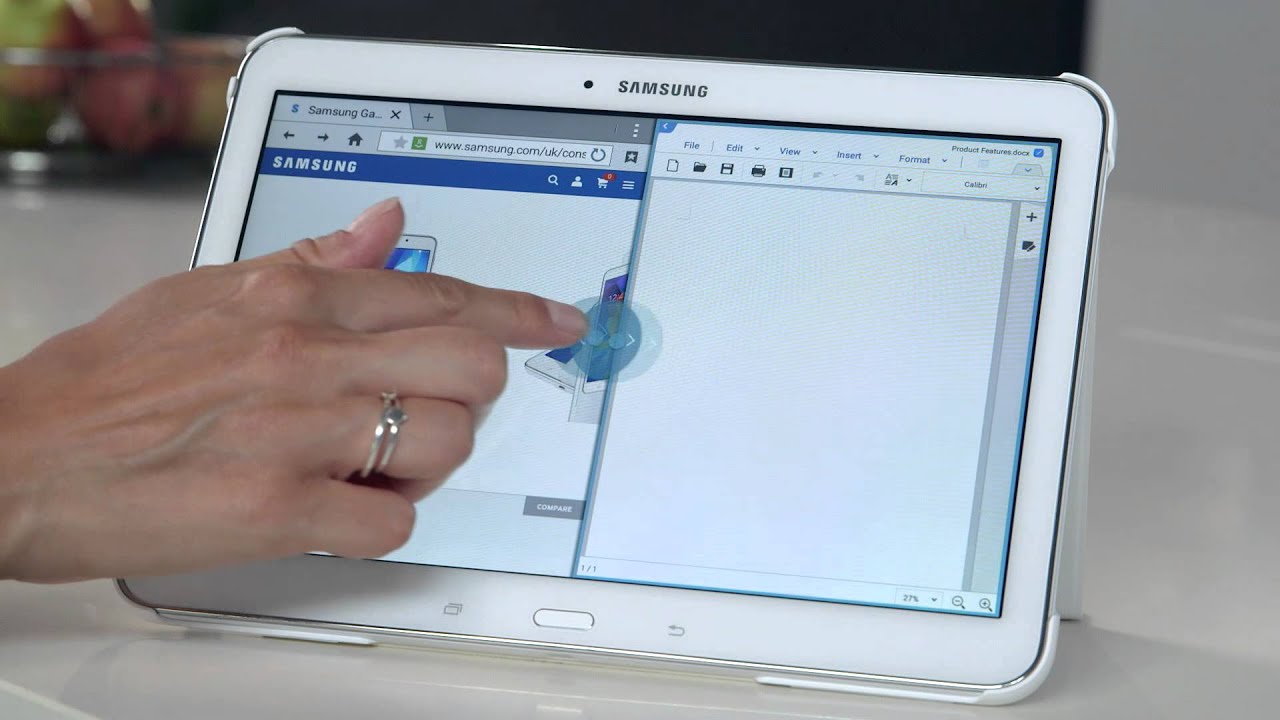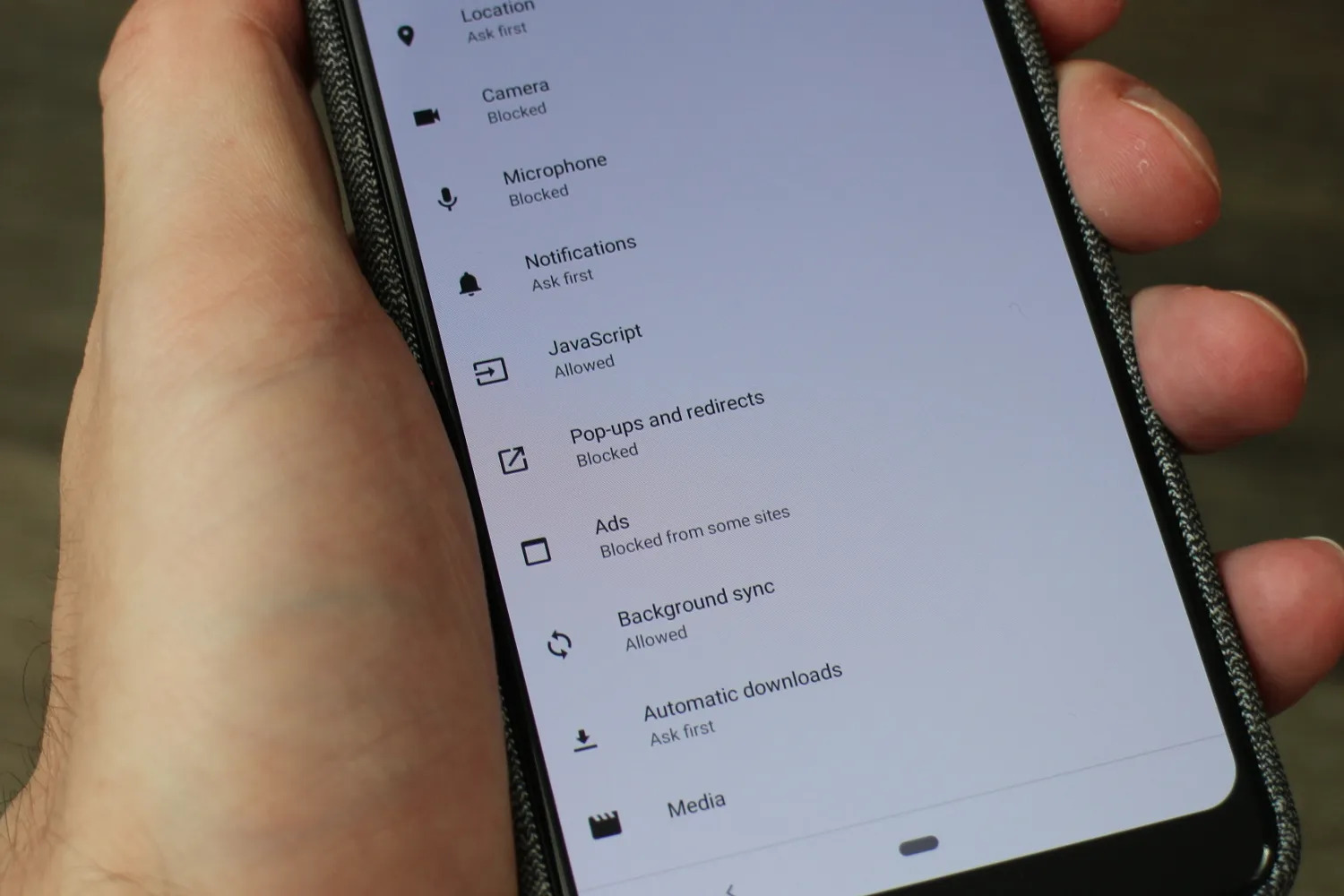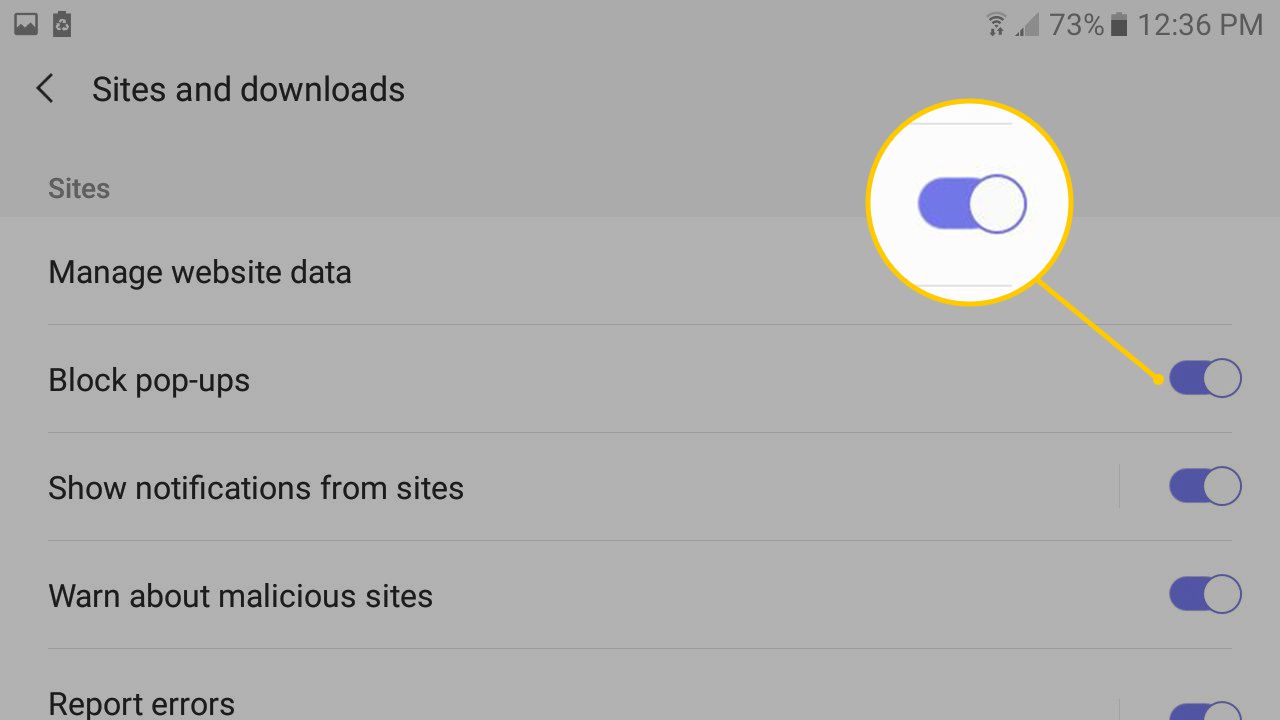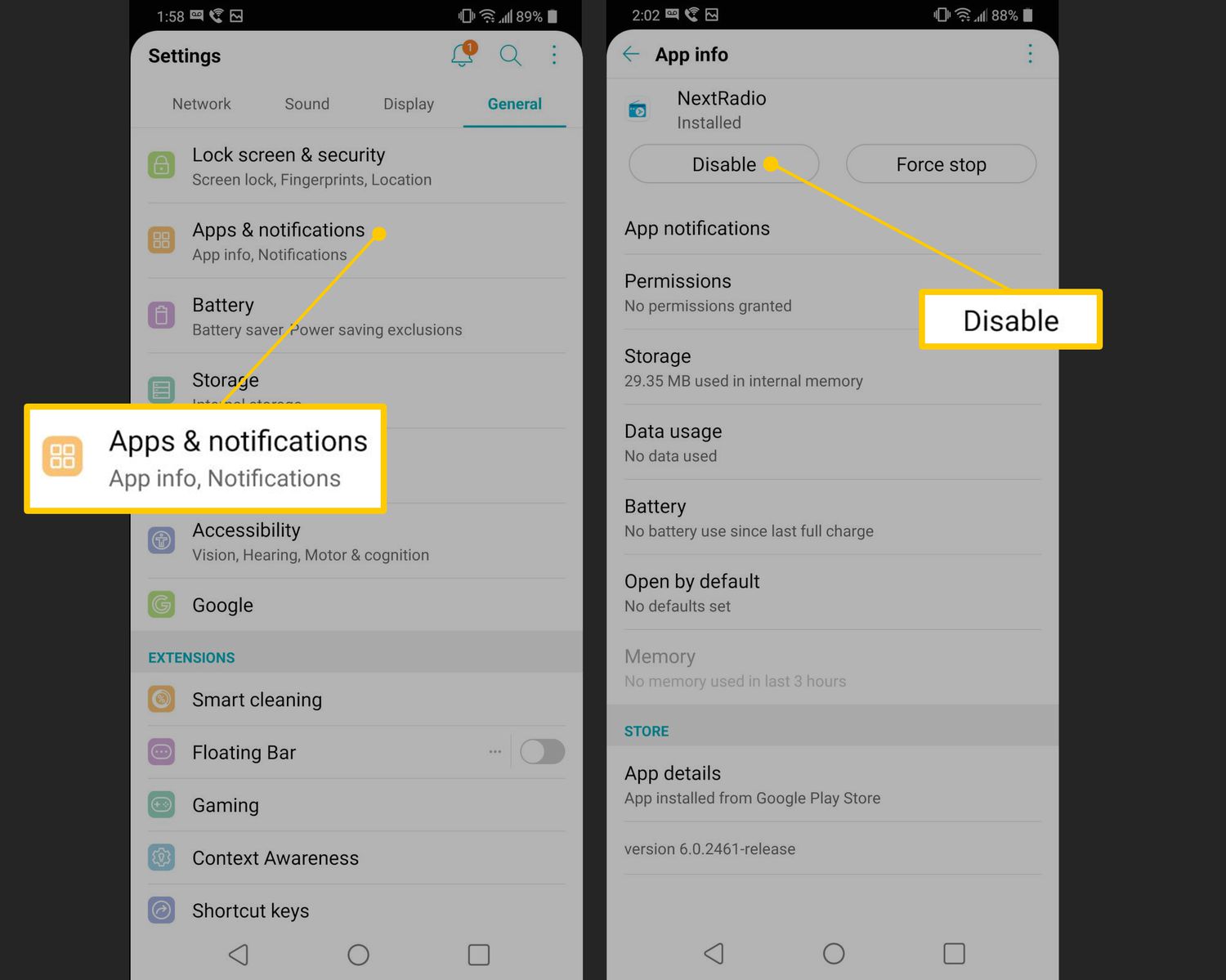Introduction
Pop-up ads on Android tablets can be a frustrating and intrusive experience. They can disrupt your browsing sessions, slow down your device, and even pose security risks. However, you don’t have to tolerate these pesky ads any longer. In this guide, we will explore effective methods to get rid of pop-up ads on your Android tablet.
Android tablets offer a versatile and convenient browsing experience, with access to a wide range of apps and websites. However, this freedom can come at a cost, as some apps and websites may display irritating pop-up ads that diminish your overall user experience.
Understanding how pop-up ads appear on your Android tablet is crucial to effectively combating them. These ads are typically generated by certain apps or websites you visit. They are designed to capture your attention and promote products, services, or even malicious content.
Fortunately, there are several methods you can use to eliminate these unwanted ads from your Android tablet. In the following sections, we will explore practical steps you can take to disable notifications from apps, clear cache and data, uninstall suspicious apps, use a pop-up blocker, enable data saver mode, reset advertising ID, update Android System WebView and Google Chrome, and scan for malware or adware.
By following these methods, you will be able to regain control over your Android tablet and enjoy a smooth and uninterrupted browsing experience. So, without further ado, let’s dive into the steps that will help you get rid of those annoying pop-up ads once and for all.
Understanding Pop Up Ads on Android Tablets
Pop-up ads on Android tablets can be both frustrating and intrusive. These ads typically appear as small windows that suddenly pop up on your screen, often while you are browsing the internet or using certain apps. Understanding how pop-up ads work on your Android tablet will help you effectively tackle the issue.
Pop-up ads are usually generated by specific apps or websites that you interact with. These ads are designed to capture your attention and promote products, services, or even malicious content. They can be triggered by various actions, such as visiting a certain website, clicking on a particular link, or using a specific app.
There are different types of pop-up ads that you may encounter on your Android tablet:
- Click-through pop-ups: These ads appear in a new window or tab when you click on a link or button within an app or website. They redirect you to a different page, often with the intention of generating revenue for the advertiser.
- Display pop-ups: These ads show up on your screen without any interaction on your part. They can appear while you are using a specific app or browsing the internet. Display pop-ups are often used to promote products or services and can be disruptive to your browsing experience.
- Overlay pop-ups: Overlay pop-ups cover a portion of your screen, making it difficult to interact with the underlying content. These ads typically appear when you are using a specific app and can be particularly annoying.
- Notification pop-ups: Some apps send notification-based pop-up ads to your Android tablet. These ads appear as a notification in your device’s notification center and can be intrusive, continuously appearing until dismissed.
It’s important to note that not all pop-up ads are malicious or harmful. Many legitimate websites and apps use pop-ups to deliver important information, such as cookie consent notices or subscription offers. However, excessive and unwanted pop-ups can significantly impact your user experience.
To effectively tackle pop-up ads on your Android tablet, it’s essential to identify their sources. In the following sections, we will explore the common sources of pop-up ads and provide practical methods to get rid of them.
Common Sources of Pop Up Ads on Android Tablets
Pop-up ads on your Android tablet can originate from various sources. Understanding these common sources will help you identify the apps or websites responsible for the intrusive ads, allowing you to take appropriate action to eliminate them.
Here are some of the typical sources of pop-up ads on Android tablets:
- Ad-supported apps: Many free apps rely on advertising revenue to support their development and maintenance. These apps often display pop-up ads as a way to generate income. While not all ad-supported apps exhibit intrusive ads, some may go overboard and disrupt your browsing experience.
- Aggressive websites: Certain websites utilize aggressive advertising methods, including pop-up ads, to monetize their content. These websites may display multiple pop-ups that can be frustrating to deal with while browsing.
- Malware or adware: In some cases, your Android tablet may be infected with malware or adware that injects pop-up ads into your system. These malicious programs can hijack your browser or apps, causing unwanted pop-ups to appear on your device.
- Browser extensions or add-ons: Certain browser extensions or add-ons can contribute to the display of pop-up ads. These extensions may be installed intentionally or bundled with other software without your knowledge.
- Notifications from apps: Some apps send notification-based pop-up ads to your Android tablet’s notification center. These can be particularly intrusive as they appear even when you are not using the app.
To address the issue of pop-up ads effectively, you need to identify the specific sources on your tablet. In the following sections, we will discuss several methods to eliminate pop-up ads on your Android tablet, including disabling notifications, clearing cache and data, uninstalling suspicious apps, using a pop-up blocker, enabling data saver mode, resetting advertising ID, updating Android System WebView and Google Chrome, and scanning for malware or adware.
By understanding the common sources of pop-up ads, you can take targeted actions to regain control over your Android tablet and enjoy a seamless browsing experience.
Method 1: Disable Notifications from Apps
One of the primary sources of pop-up ads on your Android tablet is notifications from apps. Many apps send push notifications, including pop-up ads, to grab your attention and promote their content. Disabling notifications from these apps can help you eliminate unwanted pop-ups.
Here’s how you can disable notifications from apps on your Android tablet:
- Open the Settings on your Android tablet.
- Scroll down and tap on “Apps” or “Applications” to view your installed apps.
- Select the app from which you want to disable notifications.
- On the app’s information screen, look for the “Notifications” option and tap on it.
- You will see a list of notification categories for that app. Toggle off the categories that you don’t want to receive notifications from.
- Repeat the above steps for each app that sends unwanted pop-up ads.
By disabling notifications from specific apps, you can prevent them from displaying pop-up ads and interrupting your browsing experience. However, keep in mind that disabling notifications for all apps may prevent you from receiving important updates and alerts.
If you want to completely remove pop-up ads from your Android tablet, you may need to consider additional methods, which we will discuss in the upcoming sections.
Now that you know how to disable notifications from apps, let’s move on to the next method to get rid of pop-up ads on your Android tablet.
Method 2: Clear Cache and Data of Problematic Apps
Pop-up ads on your Android tablet can sometimes be caused by cached data or corrupt app files. Clearing the cache and data of problematic apps can help resolve issues and eliminate intrusive pop-ups. Here’s how you can do it:
- Go to the Settings menu on your Android tablet.
- Scroll down and tap on “Apps” or “Applications”.
- Select the app that is displaying pop-up ads.
- On the app’s information screen, you will see options like “Storage” or “Storage & cache”. Tap on this option.
- You will see two buttons: “Clear cache” and “Clear data”. Tap on “Clear cache”.
- If the pop-up ads persist, you can go back and tap on “Clear data”. Keep in mind that clearing data will delete your app’s settings and login information, so make sure to back up any important data before doing this.
- Repeat the above steps for each app that is causing pop-up ads.
Clearing the cache and data of problematic apps can help eliminate any corrupted files or stored data that could be triggering the pop-up ads. It essentially resets the app to its default state, which can resolve many issues, including the display of intrusive ads.
If the pop-up ads continue to appear even after clearing the cache and data, you may need to consider the next method to effectively combat the issue.
Now that you have learned how to clear the cache and data of problematic apps, let’s move on to the next method to get rid of pop-up ads on your Android tablet.
Method 3: Uninstall Suspicious or Irrelevant Apps
If you are experiencing persistent pop-up ads on your Android tablet, it’s possible that one or more of your installed apps are the culprit. Uninstalling suspicious or irrelevant apps can help in getting rid of these intrusive ads once and for all.
Here’s how you can uninstall apps on your Android tablet:
- Go to the Settings menu on your Android tablet.
- Scroll down and tap on “Apps” or “Applications”.
- You will see a list of all installed apps on your tablet.
- Scroll through the list and look for apps that you find suspicious or no longer need.
- Tap on the app that you want to uninstall.
- On the app’s information screen, you will find an option to “Uninstall”. Tap on it.
- A confirmation message will appear. Tap “OK” to confirm the uninstallation.
- Repeat the above steps for any other suspicious or irrelevant apps that you want to remove.
By uninstalling suspicious or irrelevant apps, you can eliminate any potential sources of intrusive pop-up ads. It is essential to review the apps installed on your Android tablet regularly and remove any that you no longer use or appear suspicious.
If you are unsure about a particular app, you can also check its reviews and ratings on the Google Play Store or other trusted sources. This can help you ascertain if other users have experienced similar issues with the app.
While uninstalling suspicious apps can help in getting rid of pop-up ads, sometimes the problem may persist. In such cases, you may need to explore additional methods, which we will cover in the upcoming sections.
Now that you know how to uninstall suspicious or irrelevant apps, let’s move on to the next method to effectively eliminate pop-up ads on your Android tablet.
Method 4: Use a Pop Up Blocker App
To effectively combat pop-up ads on your Android tablet, you can install and utilize a pop-up blocker app. These apps are specifically designed to block or minimize the display of intrusive pop-up ads, providing you with a smoother and uninterrupted browsing experience.
Here are the steps to use a pop-up blocker app on your Android tablet:
- Open the Google Play Store on your Android tablet.
- In the search bar, type “pop-up blocker” or “ad blocker” and press Enter.
- You will see a list of pop-up blocker apps. Look for reputable ones with high ratings and positive reviews.
- Select a pop-up blocker app that suits your preferences and needs.
- Tap on the “Install” button to download and install the app on your tablet.
- Once the installation is complete, open the app.
- Follow the instructions within the app to enable the pop-up blocker functionality.
- Adjust any settings or preferences as needed.
Using a pop-up blocker app can proactively prevent pop-up ads from interrupting your browsing sessions. These apps typically work in the background, analyzing and blocking potential pop-ups, ensuring a more enjoyable user experience.
While pop-up blocker apps can significantly reduce the occurrence of intrusive ads, it’s important to choose a reliable and reputable app. Look for apps with positive reviews, regular updates, and a proven track record in offering effective pop-up blocking functionality.
Now that you know how to use a pop-up blocker app, let’s move on to the next method to get rid of pop-up ads on your Android tablet.
Method 5: Enable Data Saver Mode
Enabling Data Saver mode on your Android tablet can help reduce the occurrence of pop-up ads and save your data usage. This feature restricts background data usage and prevents certain apps from consuming excessive data, including displaying pop-up ads.
To enable Data Saver mode on your Android tablet, follow these steps:
- Go to the Settings menu on your Android tablet.
- Scroll down and tap on “Network & internet”.
- Tap on “Data usage”.
- Look for and select “Data Saver” or a similar option.
- Toggle on the switch to activate Data Saver mode.
- Some devices may provide additional settings for Data Saver mode. Adjust the settings according to your preferences.
When Data Saver mode is enabled, certain apps and background processes will have limited access to the internet, which can help prevent the display of pop-up ads. Additionally, Data Saver mode can reduce your overall data usage, especially if you are on a limited data plan.
Keep in mind that enabling Data Saver mode may affect certain features or functionalities of apps that heavily rely on internet connectivity. However, most modern apps are designed to work efficiently even with Data Saver mode enabled.
If you are still experiencing persistent pop-up ads after enabling Data Saver mode, you may need to consider implementing additional methods, which we will cover in the upcoming sections.
Now that you know how to enable Data Saver mode, let’s move on to the next method to effectively eliminate pop-up ads on your Android tablet.
Method 6: Reset Advertising ID
Resetting the Advertising ID on your Android tablet can help in reducing the display of targeted pop-up ads. The Advertising ID is a unique identifier that advertisers use to deliver personalized ads based on your browsing and app usage habits. By resetting this ID, you can disrupt the tracking and targeting of ads, potentially minimizing the number of pop-up ads you encounter.
Here’s how you can reset the Advertising ID on your Android tablet:
- Go to the Settings menu on your Android tablet.
- Scroll down and tap on “Google” or “Google Services & preferences”.
- Look for and select “Ads” or “Advertisement”.
- You will see an option to reset your Advertising ID. Tap on it.
- A confirmation message will appear. Tap “OK” to confirm the reset.
When you reset your Advertising ID, the current identifier associated with your device will be cleared, and a new one will be generated. This process essentially restarts your advertising profile, making it more difficult for advertisers to track your activity and display targeted pop-up ads.
Keep in mind that resetting the Advertising ID may not completely eliminate all pop-up ads, as some may still be displayed based on contextual or non-personalized targeting. However, it can help in reducing the frequency of targeted ads that rely on your previous browsing and app usage behavior.
If pop-up ads continue to persist even after resetting the Advertising ID, there are additional methods to explore, which we will discuss in the upcoming sections.
Now that you know how to reset the Advertising ID, let’s move on to the next method to eliminate pop-up ads on your Android tablet.
Method 7: Update Android System WebView and Google Chrome
Updating the Android System WebView and Google Chrome apps on your Android tablet can help in resolving compatibility issues that could be causing pop-up ads. WebView is a system component that allows apps to display web content, while Google Chrome is the default web browser on most Android devices.
Here’s how you can update these apps on your Android tablet:
- Open the Google Play Store on your Android tablet.
- In the search bar, type “Android System WebView” and press Enter.
- If there is an update available for Android System WebView, you will see an “Update” button. Tap on it to update the app.
- Now, search for “Google Chrome” in the Play Store.
- If there is an update available for Google Chrome, tap on the “Update” button to update the app.
- Wait for the updates to download and install on your device. This process may take a few moments depending on your internet connection speed.
- Once the updates are installed, open the updated apps to ensure that you are running the latest versions.
Updating Android System WebView and Google Chrome ensures that you have the latest security patches, bug fixes, and compatibility improvements. These updates can help in resolving any issues that may be contributing to the display of unwanted pop-up ads.
It’s important to note that while updating these apps can help prevent pop-up ads caused by compatibility issues, some ads may still persist due to other factors such as the websites you visit or the apps you use.
If pop-up ads continue to appear on your Android tablet after updating WebView and Chrome, there are additional methods to try out, which we will cover in the upcoming sections.
Now that you know how to update Android System WebView and Google Chrome, let’s move on to the next method to effectively eliminate pop-up ads on your Android tablet.
Method 8: Scan for Malware or Adware
If you are still experiencing persistent pop-up ads on your Android tablet despite trying the previous methods, it’s possible that your device may be infected with malware or adware. Performing a thorough scan for malware or adware can help in detecting and removing any malicious programs that could be causing the intrusive ads.
Follow these steps to scan for malware or adware on your Android tablet:
- Install a reputable antivirus or security app from the Google Play Store. There are several trusted options available, such as Avast, Bitdefender, or Malwarebytes.
- Open the antivirus or security app after installation.
- Follow the on-screen instructions to set up the app, including granting the necessary permissions.
- Look for and select an option to perform a full device scan or a malware/adware scan.
- Initiate the scan and allow the app to thoroughly scan your device for any potential threats.
- If any malware or adware is detected, follow the app’s prompts to remove or quarantine the identified threats.
- Once the scan is complete and any threats have been dealt with, restart your Android tablet and check if the pop-up ads have stopped appearing.
Scanning your Android tablet for malware or adware helps in identifying and removing any malicious programs that may be causing the display of intrusive pop-up ads. These security apps employ sophisticated algorithms and databases to detect known malware and adware signatures, ensuring a safer and cleaner device.
Additionally, it’s crucial to keep your antivirus or security app updated with the latest virus definitions and security patches. Regularly performing scans and keeping your device protected from potential threats can help in preventing future pop-up ad issues.
If scanning for malware or adware doesn’t resolve the problem, there are additional methods to explore, which we will cover in the upcoming sections.
Now that you know how to scan for malware or adware, let’s move on to the concluding section, where we will summarize the methods discussed and provide some final tips to effectively eliminate pop-up ads on your Android tablet.
Conclusion
Dealing with pop-up ads on your Android tablet can be a frustrating experience, but with the right methods, you can effectively eliminate them and enjoy a smoother browsing experience. Here’s a recap of the methods discussed:
- Disable Notifications from Apps: Prevent apps from sending pop-up ads by disabling their notifications in the system settings.
- Clear Cache and Data of Problematic Apps: Clearing the cache and data of apps that display pop-up ads can resolve issues and remove corrupt files.
- Uninstall Suspicious or Irrelevant Apps: Remove apps that are causing pop-up ads, especially if they are suspicious or no longer useful.
- Use a Pop-Up Blocker App: Install a pop-up blocker app from the Google Play Store to block and minimize the occurrence of intrusive pop-up ads.
- Enable Data Saver Mode: Activate Data Saver mode to restrict background data usage and reduce the display of pop-up ads.
- Reset Advertising ID: Resetting the Advertising ID disrupts ad tracking and targeting, potentially reducing the number of targeted pop-up ads encountered.
- Update Android System WebView and Google Chrome: Keeping these apps up to date ensures compatibility and security improvements that can help prevent pop-up ads.
- Scan for Malware or Adware: Use a reputable antivirus or security app to scan and remove any malicious programs that may be causing pop-up ads.
By implementing these methods, you can regain control over your Android tablet and enjoy an ad-free browsing experience. Remember to regularly update your apps and perform security scans to prevent future pop-up ad issues. Additionally, practicing safe browsing habits, such as avoiding suspicious websites and installing apps only from trusted sources, can help in minimizing the risk of encountering intrusive ads.
Now it’s time to put these methods into action and bid farewell to those pesky pop-up ads once and for all.







